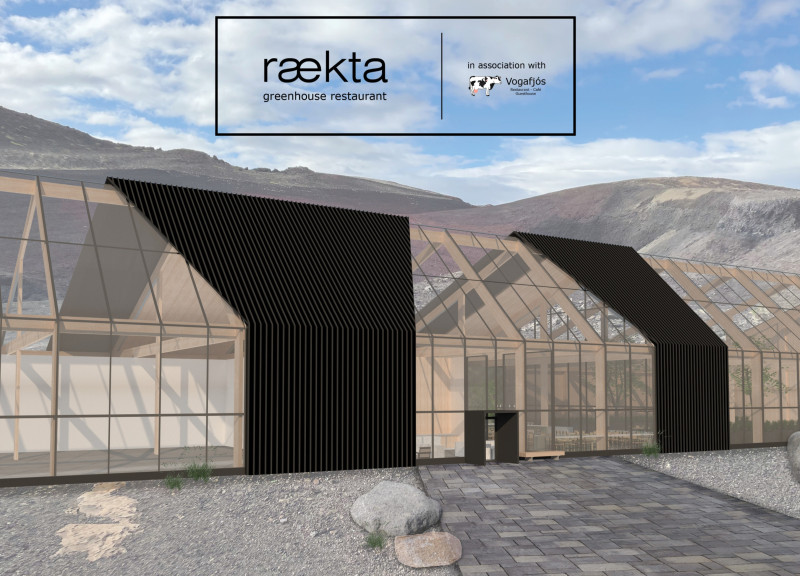5 key facts about this project
Rækta greenhouse restaurant, situated in the Mývatn region of Iceland, blends culinary experience with community engagement and environmental consideration. The design reflects the idea of cultivation, connecting the food served with the relationships built among visitors. The distinctive greenhouse shape is carried throughout the building, creating a unified space that emphasizes openness and interaction with the surrounding nature.
Architectural Organization
Upon entering, visitors find a concierge and lounge area featuring local art and sculpture, which enhances the sense of local culture. This layout invites exploration and encourages movement between public and private spaces. The south end of the building includes a glazed event space designed to accommodate different functions, providing expansive views of the Hverfjall volcano and the Mývatn nature baths, effectively merging the indoor experience with the outdoor environment.
Dining Experience
To the north of the entrance, the sit-down restaurant shares a full-height glazed wall with the greenhouse, promoting a direct garden-to-table dining experience. Guests can see the fresh produce grown on-site, and within the greenhouse, large communal chef's tables support both private dining and educational gardening activities. This setup highlights the importance of community engagement within the dining space.
Sustainability and Functionality
The project applies a Deep Winter Greenhouse design suited for the cold Icelandic climate, prioritizing sound insulation to hold in heat. This strategy minimizes heat loss, which is common in standard greenhouses. Passive solar energy plays a vital role in the design, maximizing energy retention in insulated walls while leveraging natural light to aid plant growth. A geothermal heating system provides warmth during the colder months.
Structural Materials
Cross-laminated timber beams and interior timber cladding are used, emphasizing the building's structural integrity while supporting its sustainability goals by minimizing construction emissions. These materials enhance visual appeal and contribute to the project's overall function, strengthening its commitment to environmental responsibility.
In the greenhouse, a large communal dining table invites guests to gather and share in meal preparation, emphasizing the connection between people and the food they eat. This detail reinforces the project’s focus on community and cultivation.






















































